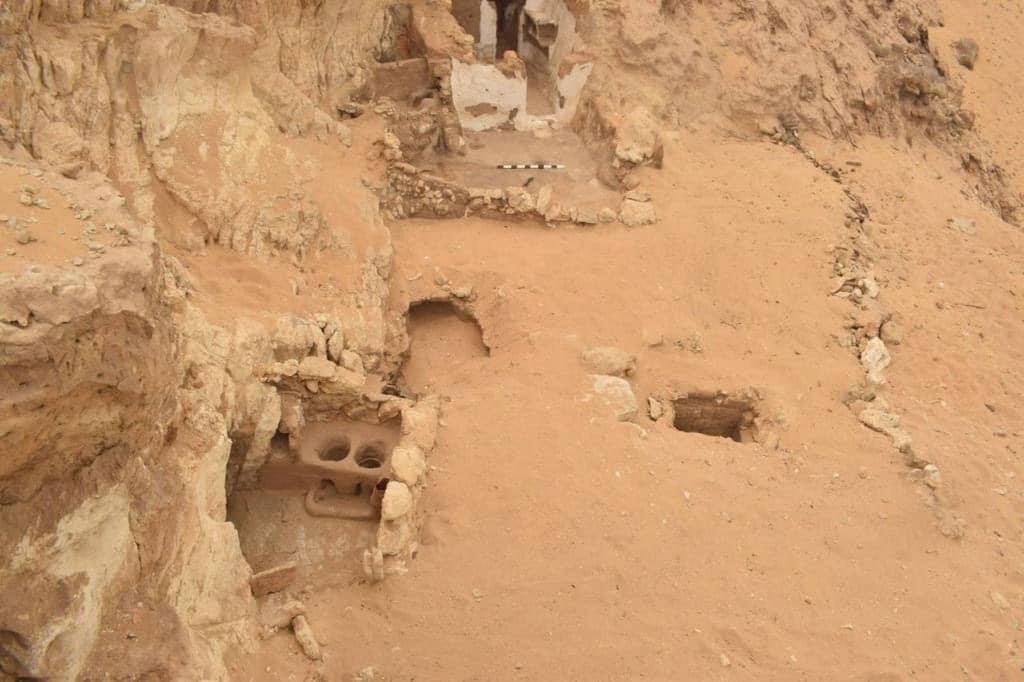
Ongoing archaeological missions at the necropolis of Meir in Qusiya, Egypt, equidistant from the cities of Cairo and Aswan, are offering a fuller understanding of the region’s rich multicultural heritage. A particularly successful excavation just led by Egyptian researchers has unearthed new building foundations, religious materials, burials and more—all spanning an unusual breadth of history for a single site.
The latest efforts at Meir have uncovered two layers of findings from two distinct eras in its ancient history.
Parts of the decayed coffin of a woman, including face, chest area and palms. Photo: Egyptian Ministry of Tourism and Antiquities.
On the upper level, archaeologists found building remnants from the Byzantine period (330–1453 C.E.) that were once monks’ cells, a patio, storage, and a fireplace; and below, jewelry, pottery, and funerary objects dated to around Egypt’s last epoch of pharaonic rule, the Late Period, between 660 to 330 B.C.E.
“The discovery,” said Mostafa Waziry of the Egyptian Ministry of Tourism and Antiquities in a statement, “highlights the significance of Meir during the Old and Middle Kingdoms as well as the Late Period.”
Jewelry beads found at the site. Photo: Egyptian Ministry of Tourism and Antiquities.
During the Old Kingdom through Middle Kingdom eras of 2300 to 1800 B.C.E., Meir functioned as a burial site for the ruling elite of the ancient city of Cusae, the residents of which worshipped the Egyptian solar deity Hathor.
Within the remains of the building, the team found eight horizontal lines of prayers in supplication to early saints, which were inscribed with black ink in Coptic text next to a wall of shelves built by bygone monks.
Burials abounded below, including one of an unnamed woman. A number of relics including coffin fragments, a burial mask, and several human skeletons managed to survive shoddy preservation, though pottery, engagement beads, and copper mirrors fared better.
More Trending Stories: